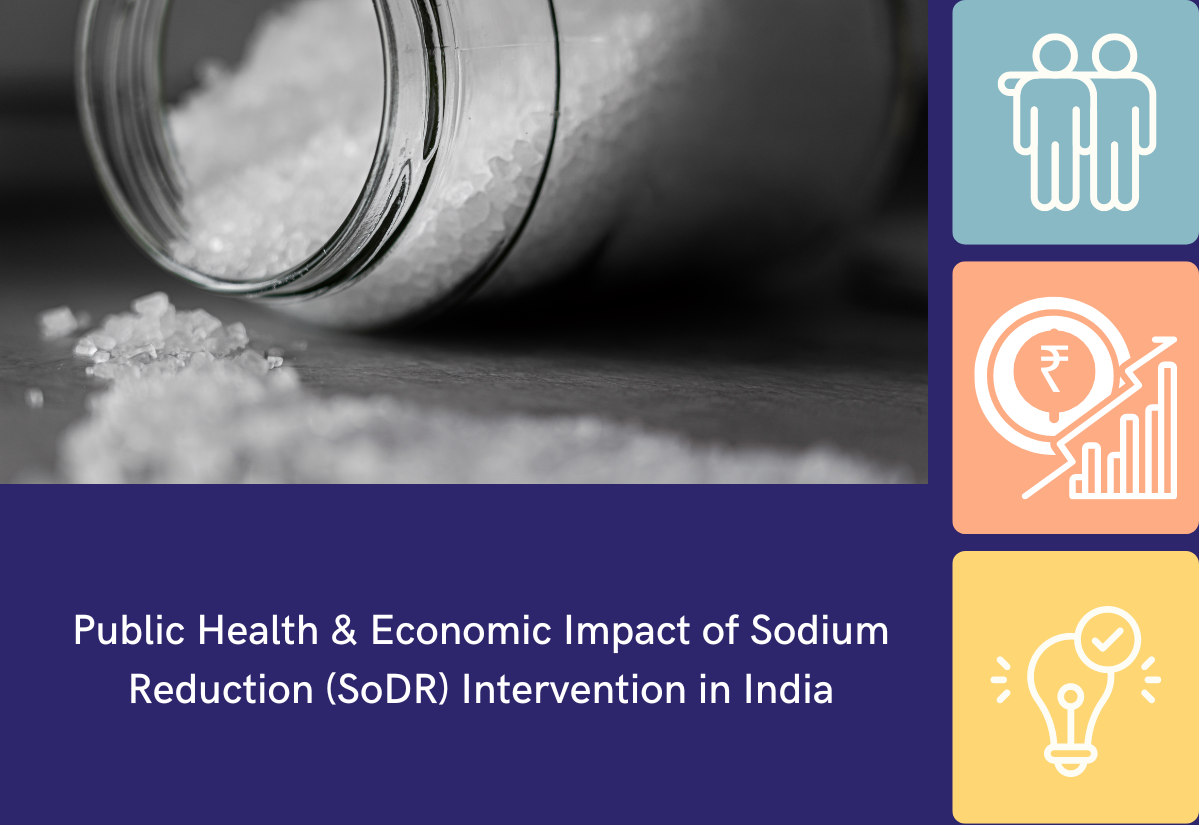
Noncommunicable diseases (NCDs) account for around 74% of all deaths globally, out of which almost half is due to cardiovascular diseases (CVDs). India, with the largest population in the world, has seen a significant rise in CVDs in the past ten years, which has been a key concern of the government.
WHO recommends that reducing sodium intake is an effective strategy for preventing hypertension and other CVDs. In 2013, all WHO Member States, including India, committed to reduce population sodium intake by 30% by 2025, as per the WHO recommendation [maximum intake of <2000 mg/day sodium (<5g/day salt) in adults]. Existing surveys and studies in India show that adults consume between 8-11 gms of salt per day, approximately twice the WHO recommended intake, creating a significant risk for developing hypertension, leading to CVDs.
To address the rising incidence of hypertension and CVDs, WHO suggests several interventions such as mass media campaigns, increasing uptake of low sodium salt, setting standards for sodium as part of food procurement policy, implementing front-of-pack labelling regulations, implementing voluntary/mandatory food reformulation targets, marketing food regulations and fiscal interventions like higher taxes for high sodium foods. Such policies can be mandatory or voluntary, and many countries are in the process of assessing the costs, health and economic impact of their policies. India has already committed to reducing sodium consumption by 30% by the year 2025, a deadline which will be hard to achieve given the high sodium consumption in the country unless there are targeted interventions. However, to the best of our knowledge, there is no comprehensive study in India examining both the cost of interventions and the health and economic impacts of different SoDR intervention policies, which may help the country to meet the target for sodium consumption.
The objective of this study is to estimate the potential health and economic impact of salt reduction on India’s population. It will explore the health and economic impact of various SoDR intervention policies, including their distribution across different socio-economic groups in the population. The study will then make policy recommendations for the India’s comprehensive salt reduction policy, prioritising the intervention that will help the government get the best results.
The study is based on a review of literature (systematic and meta-analysis), learning from global best practices, analysis of present and future trends in consumption of food products by sodium content, descriptive analysis and econometric modelling to estimate the cost of interventions and potential health and economic impact of implementing SoDR interventions on the Indian population.
